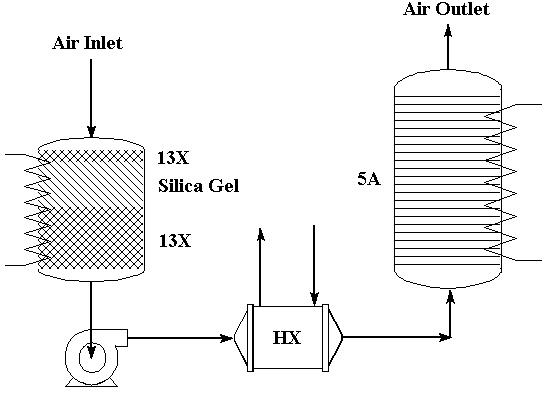Application and characteristics of Molecular Sieve
2024-02-16
Molecular sieve is a type of silica aluminate microporous crystal with uniform pore size and extremely high specific surface area, good thermal stability, strong adsorption performance, large internal surface area, and high strength. Molecular sieves are divided into:
Adsorption dehydration: Molecular sieve 3A, 4A, 5A, 13X.
Gas adsorption separation: Molecular sieve 4A, 5A, 13X.
PSA Nitrogen and oxygen production: Carbon molecular sieve, 13x-HP molecular sieve, lithium molecular sieve.
Hollow glass: Insulation glass molecular sieve.
Polyurethane adhesive/plastic dehydration additive: Activated molecular sieve powder.
So what’s the main characteristics of molecular sieves?
(1) Molecular sieves can repeatedly adsorb and desorb water or various gases and liquid compounds.
(2) Molecular sieves can achieve selective adsorption, that is to say, only adsorbing molecules smaller than the pore size of the molecular sieve.
(3) For small unsaturated polar molecules, it has excellent selective adsorption performance. The higher the unsaturation and polarity, the stronger its adsorption capacity.
(4) Has strong water absorption. Even at higher temperatures, higher airspeed, and lower water content, molecular sieve is still a relatively high water absorption capacity.

Experiments have shown that molecular sieves have strong adsorption capacity for highly polar molecules such as water, ammonia, hydrogen sulfide, and carbon dioxide. Especially for water, there is still a high adsorption capacity under extremely harsh conditions such as low partial pressure, low concentration, and high temperature (even above 100 ℃).
1. Adsorption at low pressure or concentration
At a relative humidity of 30%, the water absorption of molecular sieves is higher than that of silica gel and activated alumina. As the relative humidity decreases, the superiority of molecular sieves becomes more significant. As the humidity decreases, the adsorption capacity of silicone and activated alumina decreases rapidly.
2. High temperature adsorption
At higher temperatures, activated alumina, especially silica gel, will almost lose its adsorption capacity.
Molecular sieve is the only available high-temperature adsorbent. At 100 degrees Celsius and a relative humidity of 1.3%, the water absorption of the molecular sieve can still reach 15%, which is 10 times greater than that of activated alumina under the same conditions.
Jiangxi OIM Chemical Co., Lts is professional supplier in adsorbents suppliers. In some projects, will use molecular sieve, activated alumina, ceramic ball together. To know more details, can send your valuable inquiry to discuss with us.
